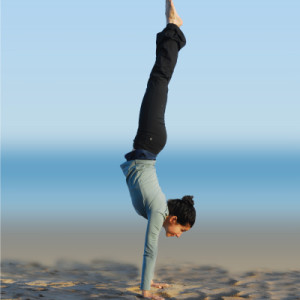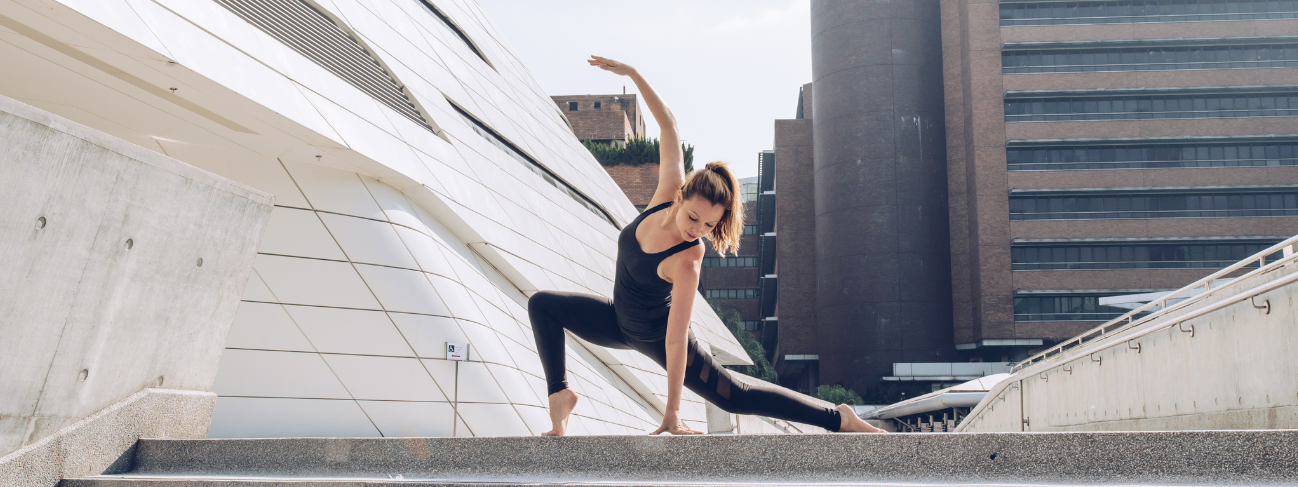
27 Feb Yoga for Everyone at Flex

It can be bewildering how many different types of yoga there are to choose from. At Flex, for example, we have many kinds. So… which one is best for you? Which one suits your temperament, your goals and your physical, mental and spiritual states? Read on to discover the differences between Hatha, Ashtanga and Vinyasa.
Hatha
Really any yoga practice that involves postures, Hatha yoga can also be attributed to specific classes. At Flex, our Hatha classes take students on a journey through a number of individual poses, with each one’s alignments carefully explained, before moving on to the other side, and then another asana.
“Hatha is a great introduction if you are new to yoga, or new to exercise in general,” says instructor Jessica Williams. “It offers a slightly slower, more paced class and gives you extra time to spend in each pose. This means you can really tune in to how your body is feeling, and into your breath as you change posture. It gives you plenty of space in which to focus your attention and plenty of time to slowly build to more advanced postures.”
She adds that along with asanas there is a focus on breathing and meditation practices for a full mind, body and spirit experience.
Ashtanga
Ashtanga is made up of different series, and at Flex Jessica leads the Primary Series, which would normally take over 90 minutes to complete, so she chooses certain portions to fit into the hour’s class. A set sequence of moves, it begins with warm up and finishing sequences, which are always the same whichever series you’re working on.
“The primary series is tough and it is quick moving,” she says. “You move with the breath and when you hold postures you usually hold them for five breaths. There is a focus on forward bending to begin with, backbends and inversions towards the end, but like all yoga practices it is a full body practice.”
Each class is slightly different at Flex as Jessica assesses what the class wants and needs. “As we progress as a class I’ll work towards more advanced postures. Even so, it’s a great practice for checking your progress as you’re always doing roughly the same sequence. It is also a great practice for building strength and you finish with a strong vibration and sense of energy flowing in the body.”
So who is Ashtanga best for? “This practice resonates with people who like a powerful practice, who want to build up a sweat and push themselves. It builds a lot of upper body strength while simultaneously focusing the mind, helping you tune into your breath.”
Vinyasa
Vinyasa is a style of yoga that stems from Ashtanga, and yet at the same time it is very different. It can be a more chilled class, although of course it depends on the teacher.
“My Vinyasa class is slower paced than Ashtanga,” says Jessica. “We alternate between really flowing, moving and breathing with stable poses that are held for longer.”
Choosing the sequencing according to the class, she has a lot more freedom as an instructor. “If the class is feeling tight in the hips and shoulders then I can build the sequence around that. It is always a full body class too, and likely there will be backbends, inversions, arm balancing, twists…”
“It can be quite creative and you can make up the shape of each class as it progresses, creating different sequences and postures to focus on,” she says. “Each class is always different. I love teaching Vinyasa.”
To find out more about the different yogas offered at Flex click here.


